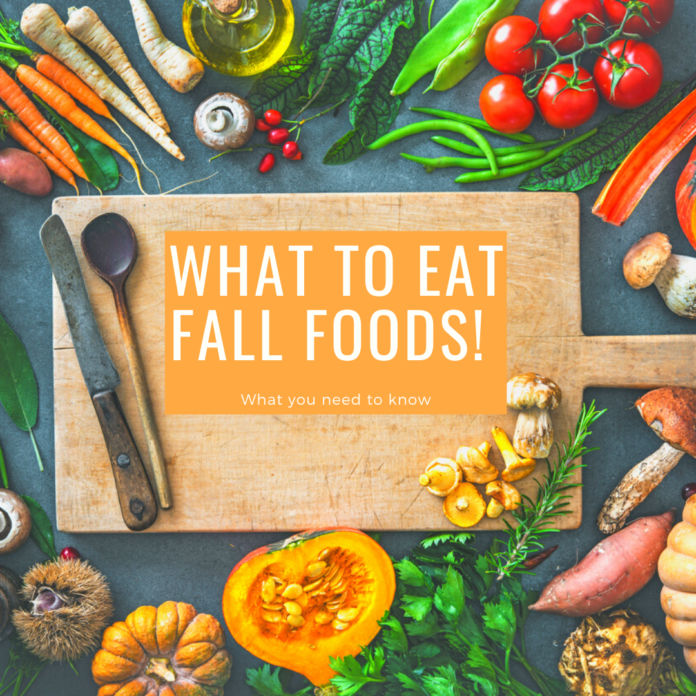Is it still summer where you are?
Depending on where you live, our environment plays a huge role in the way we eat. When I was living in Florida I really had no idea what “seasons” were. I was eating pineapple and watermelon all year round. When I moved to Virginia in 2007 (I now currently reside in Louisiana as of last month), I noticed a major shift in my body during the change of seasons. Because Florida is a tropical climate, it’s great to eat tropical fruits all year round. But if you’re living in a northern climate, eating tropical fruits isn’t ideal, even if they’re healthy for you. Just like all the amazing changes that are happening outside during each season, the same is happening in our own unique bodies. When our bodies are in harmony with the environment we live in, it runs more efficiently. One of the best ways to achieve this efficiency and balance is to eat food that naturally grows during each season.
Now that fall is upon us, that means cooler air is on its way. This is a great time to start adding in heavier and denser foods that will prepare your body for the winter season. If you keep eating summer foods during this time of year, especially those wonderful watery/sugary fruits and vegetables, it will create a cold/damp condition in your body. This will contribute to weakening of the digestive system and increases the chance of getting a cold or the flu. So, instead of continuing to fill up on summer fruits, this is the best time of year to start eating more pears and apples.
By learning how to harmonize your body (internal environment) with the earth and its seasons (external environment) you can improve your health and immunity. One way to do this is to add pungent and spicy flavors to your meals. Some of these include: onions, garlic, leeks, scallions, daikon, ginger, cumin, coriander, cayenne pepper, hot peppers, celery seed, horseradish, curry, rosemary, oregano, mustard seeds, wasabi, nutmeg, cinnamon and others. These foods help inhibit the growth of bad bacteria and they discharge excess mucus from the lungs and large intestine.
There are so many wonderful vegetables that come with the autumn harvest. Especially root vegetables! The roots of any plant are its anchor and foundation; they’re the essential parts that support and nourish the plant. Root vegetables lend these properties to us when we eat them, making us feel physically and mentally grounded, rooted, increasing our stability, stamina and endurance. Roots are a rich source of nutritious complex carbohydrates, providing a steady source of necessary sugars to the body. Instead of upsetting blood sugar levels like refined sweet foods, they regulate them. Since they absorb, assimilate and supply plants with vital nutrients, roots likewise increase absorption and assimilation in our digestive tracts.
Long roots include carrots, parsnips, burdock and diakon radish. Round roots include turnips, radishes, beets and rutabagas. Long roots are excellent blood purifiers and can help improve circulation in the body and increase mental clarity. Round roots are nourishing to the stomach, spleen, pancreas and reporductive organs and can help regulate blood sugar, moods and alleviate cravings.
This is also the perfect time of year to incorporate winter squash, celery root, cauliflower, broccoli, cabbage, kale, bok choy, collard greens, arugula, Chinese cabbage, Brussels sprouts, parsley, pumpkin, lettuces, potatoes, onions, leeks, ginger and garlic. Also, smaller less sugar fruits like blackberries, apples and pears thrive in cool weather. And, this is a great time to incorporate heavier animal protein like turkey, beef, duck, deer, buffalo, pork and others.
Just remember, the key to transitioning to fall foods is to make your food taste scrumptious and enjoy the changes that are happening all around you and your environment!
If you want to make the transition, here’s some tips!
1. When it comes to transitioning to fall foods, the best place to find out what’s in season is to visit your local farmers market. If you’d like some help finding farmers market in your area, check out localharvest.org, they have wonderful information on everything local in your area. Sustainable Table has a great link to find out what’s in season where you live. If you eat animal protein, a great site to find local, sustainable meat is eatwild.com. I loveloveLOVE supporting local farmers!
2. Instead of making the traditional mashed potatoes, try making mashed root vegetables. You can make them the same way, just add rutabaga, turnips, parsnips, even beets and carrots, too!
3. Most importantly, really start becoming aware of what your body is craving throughout each season. A great way to listen is if you live in a cold environment, eat a summer fruit. How do you feel? Are you warm? Are you cold? Then try eating a root vegetable or some heavier animal protein. Again, how do you feel?









